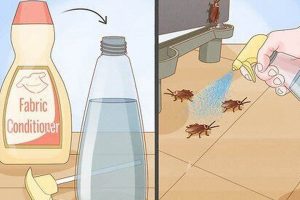Constructing projectile arrestors from readily available materials offers an accessible avenue for archery practitioners to engage in their sport without incurring substantial costs. These handcrafted impact barriers, often assembled from repurposed items, serve as a safe backstop for arrows, preventing damage and potential injury by halting their trajectory. A common example involves layering dense fabrics within a sturdy frame to create a resilient surface capable of absorbing kinetic energy.
The advantages of building one’s own arrow receptacle extend beyond mere economic savings. The process fosters resourcefulness and allows for customization to specific archery needs and available space. Historically, archers have always adapted available resources to practice their skills, demonstrating a tradition of self-sufficiency. This approach promotes accessibility to the sport, particularly for individuals or organizations with limited budgets, and encourages creativity in problem-solving.
The ensuing discussion will delve into various methods for fabricating such devices, exploring different material options, construction techniques, and considerations for safety and durability. Detailed explanations of design principles and maintenance strategies will also be provided, empowering readers to create effective and long-lasting arrow-stopping solutions.
Construction and Maintenance Guidelines
The following guidelines are intended to enhance the effectiveness and longevity of self-constructed projectile arrestors.
Tip 1: Material Density is Paramount: The primary consideration in material selection should be density. Tightly packed fabrics, such as burlap or old carpet, provide greater resistance to arrow penetration than less dense alternatives.
Tip 2: Layered Construction Enhances Absorption: Employing a layered approach, with alternating materials of differing textures and densities, maximizes energy dissipation upon impact. This strategy reduces the risk of pass-through.
Tip 3: Frame Integrity is Crucial: A robust frame, constructed from wood or other durable materials, provides structural support for the internal damping materials. Ensure the frame is adequately braced to withstand repeated impacts.
Tip 4: Compression Maintains Effectiveness: Compressing the internal filling materials increases their density and resistance to penetration. Use ratchet straps or similar devices during construction to achieve optimal compression.
Tip 5: Regular Inspection is Essential: Conduct routine inspections of the projectile arrestor to identify signs of wear and tear, such as tears in the fabric or deformation of the frame. Promptly repair or replace damaged components.
Tip 6: Rotate Impact Zones: To distribute wear evenly, periodically rotate the target face to avoid concentrating impacts in a single area. This practice extends the lifespan of the arrow-stopping device.
Tip 7: Consider Environmental Factors: When used outdoors, protect the projectile arrestor from the elements. Exposure to moisture can degrade the materials and reduce its effectiveness. Consider a weatherproof cover.
Adhering to these guidelines will contribute to the creation of a safe, effective, and durable projectile arrestor, facilitating consistent archery practice.
The subsequent section will address safety considerations related to the use of arrow arrestors and proper range setup.
1. Material Density
Material density is a paramount consideration in the construction of a safe and effective projectile arrestor. The ability of a target to decelerate and stop an arrow hinges directly on the density of the materials used in its construction. Insufficient density compromises safety and diminishes the target’s lifespan.
- Stopping Power and Penetration Resistance
Denser materials offer greater resistance to penetration. The kinetic energy of an arrow is dissipated more rapidly within a dense medium, reducing the likelihood of pass-through. Examples include tightly packed fabric scraps, compressed layers of carpet, or dense foam blocks. Each material’s resistance is a bulwark against dangerous projectile breaches.
- Material Compression and Longevity
Compressing materials increases their density, further enhancing stopping power. Uncompressed materials allow arrows to slip between fibers, decreasing effectiveness and causing the target to degrade more quickly. Compression is often achieved through tight wrapping or enclosure within a rigid frame, leading to an elongated lifespan.
- Types of Dense Materials
Several materials can be effectively used in DIY projectile arrestors due to their density. Burlap sacks tightly packed with rags, layered carpet squares, and stacked, compressed foam exhibit high density and arrow stopping capabilities. The selection should also consider cost-effectiveness and availability.
- Density and Target Size Relationship
The required density of materials is inversely proportional to the overall size of the projectile arrestor. Smaller targets demand higher density to compensate for the reduced surface area available to absorb energy. Larger targets can utilize slightly less dense materials, but the overall volume of material must still provide adequate stopping power.
In conclusion, achieving optimal material density is fundamental to the success of a DIY projectile arrestor. It directly impacts safety, durability, and the overall effectiveness of the target. Careful consideration of material selection and compression techniques is essential to creating a functional and safe archery practice environment.
2. Layered Construction
Layered construction represents a critical design principle in the fabrication of effective projectile arrestors. The arrangement of distinct material layers contributes significantly to the dissipation of kinetic energy and the overall safety and longevity of the archery target.
- Energy Dissipation and Arrow Deceleration
Employing multiple layers of varying materials optimizes energy absorption. Each layer performs a specific function, such as initial impact resistance, energy diffusion, and arrow deceleration. For example, a front layer of tightly woven fabric might be followed by layers of compressed foam, burlap sacks filled with rags, and a final buffer layer of softer material. This layered approach distributes the force of impact, preventing arrow pass-through and prolonging the target’s lifespan.
- Material Variety and Functional Specialization
The selection of diverse materials is crucial to the effectiveness of layered construction. Each material should possess unique properties that complement the others. Dense materials, like compressed fabric,
provide initial stopping power, while softer materials, such as foam or cotton, act as energy absorbers and help to gently cradle the arrow. This synergistic combination of materials ensures efficient energy dissipation and minimizes damage to the arrow itself. - Compression and Layer Interactivity
Proper compression of the layered materials is essential to maintain the target’s integrity and performance. Compression reduces air gaps between layers, increasing density and improving energy transfer. Ratchet straps or a tightly constructed frame can be employed to achieve optimal compression. Interactivity between the layers is also important; materials should be arranged to maximize friction and energy transfer upon impact.
- Durability and Maintenance Considerations
Layered construction facilitates ease of maintenance and repair. Individual layers can be replaced or repaired as needed, extending the overall lifespan of the projectile arrestor. Regular inspection of the target’s surface and replacement of damaged layers ensures continued safety and effectiveness. Furthermore, layered design often allows for rotating the target face, distributing wear and tear more evenly across the entire surface.
In summary, layered construction is a vital element in DIY projectile arrestor design, contributing to enhanced energy dissipation, improved arrow deceleration, greater material versatility, and ease of maintenance. The thoughtful selection and arrangement of materials in a layered configuration significantly improves the safety and performance of archery targets made at home.
3. Frame Integrity
Frame integrity is fundamental to the functionality and safety of a self-constructed projectile arrestor. The frame serves as the structural foundation, maintaining the shape and compression of the energy-absorbing materials within. Compromised frame integrity directly correlates with diminished stopping power and an increased risk of arrow pass-through, potentially leading to injury or property damage. A flimsy frame may buckle under repeated impacts, causing the internal materials to shift and lose their density. Consider a simple wooden frame constructed from thin, unbraced lumber; upon repeated arrow strikes, it is likely to warp or break, rendering the entire target ineffective. Conversely, a robust frame constructed from reinforced wood or metal provides the necessary support to withstand continuous use.
The design of the frame directly impacts the overall performance of the target. A well-designed frame evenly distributes the force of impact across the entire surface area, preventing localized stress points that could lead to premature failure. Features such as cross-bracing, reinforced corners, and durable fastening methods contribute to increased stability and longevity. The frame also plays a crucial role in maintaining consistent compression of the internal materials. Without adequate frame support, the materials may expand or settle, reducing their density and diminishing their ability to stop arrows effectively. An example of a good design would be a frame utilizing interlocking joints and heavy-duty hardware to prevent movement or separation of components. Another practical application is designing the frame to be easily disassembled for transport or storage, while still maintaining structural rigidity during use.
In conclusion, frame integrity is not merely a cosmetic detail, but a critical element in ensuring the safety and effectiveness of a DIY archery target. A robust and well-designed frame provides the necessary structural support, maintains material compression, and distributes impact forces, all contributing to a safer and more durable target. The selection of appropriate materials, sound construction techniques, and regular inspection are essential for maintaining frame integrity and preventing potential accidents. Failure to prioritize frame integrity undermines the entire purpose of the projectile arrestor, creating an unsafe environment for archery practice.
4. Target Size
The dimensions of a self-constructed projectile arrestor are intrinsically linked to its safety, effectiveness, and suitability for intended usage. Appropriately scaled targets mitigate risks associated with errant shots while optimizing the user’s skill development.
- Surface Area and Safety Margin
Larger surface areas provide a greater margin of error for less accurate shots, reducing the likelihood of arrows bypassing the target entirely. Novice archers, in particular, benefit from oversized targets that accommodate inconsistencies in their form and aiming. The dimensions must exceed the typical shot dispersion pattern at the intended shooting distance.
- Distance and Scalability
As shooting distances increase, the target’s dimensions must scale accordingly to maintain an adequate safety margin. Longer distances introduce greater potential for trajectory deviations due to wind, equipment variations, or inconsistencies in the archer’s technique. The target should subtend a sufficiently large angle from the archer’s perspective to account for these factors.
- Portability and Storage Considerations
Oversized targets, while enhancing safety, can pose challenges in terms of portability and storage. The dimensions must strike a balance between providing an adequate safety margin and remaining manageable for transportation and storage in the available space. Collapsible or modular designs may offer a compromise for archers with limited space or mobility.
- Material Cost and Construction Complexity
Larger target dimensions necessitate a greater quantity of materials, increasing the overall cost of construction. Furthermore, constructing larger targets may require more complex framing and support structures to maintain structural integrity. The target’s dimensions should be carefully considered in relation to budgetary constraints and the builder’s skill level.
In conclusion, the size of a projectile arrestor is a crucial parameter that influences safety, usability, and practicality. Factors such as shooting distance, archer skill level, portability requirements, and budgetary constraints should all be carefully weighed when determining the optimal dimensions for a self-constructed target.
5. Arrow Removal
The ease and safety with which arrows can be removed from a self-constructed projectile arrestor significantly impacts the user experience and the longevity of both arrows and the target itself. Difficulty in arrow extraction can lead to damage to arrow shafts, fletchings, and target materials, thereby reducing the overall value and lifespan of both. Therefore, incorporating features that facilitate straightforward arrow retrieval is a crucial consideration in target design.
- Material Selection and Penetration Depth
The choice of materials used in constructing the projectile arrestor directly influences the force required to remove arrows. Denser, more tightly packed materials, while offering superior stopping power, can also create greater friction and resistance during extraction. Ideal materials s
hould provide sufficient stopping power without excessive penetration, minimizing the surface area of the arrow shaft in contact with the target medium. - Target Compression and Arrow Binding
The degree of compression within the projectile arrestor affects how tightly arrows are held in place. Overly compressed materials can bind the arrow shaft, making removal difficult and potentially causing damage. Conversely, insufficient compression may allow arrows to pass too deeply into the target, increasing the effort required for extraction and increasing the risk of damaging the arrow point. The optimal compression level represents a balance between stopping power and ease of removal.
- Surface Lubrication and Friction Reduction
Applying a lubricant to the arrow shaft can reduce friction during penetration and extraction, simplifying the removal process. Silicone-based lubricants are commonly used in archery to minimize friction and protect arrow shafts from damage. However, the type of lubricant used should be compatible with the target materials to avoid degradation or staining.
- Arrow Pullers and Mechanical Assistance
Utilizing an arrow puller, a specialized tool designed to grip the arrow shaft and provide leverage, can significantly ease the removal process, especially when dealing with tightly embedded arrows. Arrow pullers come in various designs, including rubber grips, lever-action devices, and mechanical extractors. Selecting an appropriate arrow puller can reduce the physical strain on the archer and minimize the risk of damage to the arrow.
Optimizing arrow removal from a self-made projectile arrestor is an ongoing process that involves careful consideration of materials, compression levels, lubrication techniques, and the use of specialized tools. Prioritizing ease of extraction not only enhances the user experience but also contributes to the longevity of both the arrows and the target itself, ultimately maximizing the value and enjoyment derived from archery practice.
6. Safety Protocol
The establishment and strict adherence to safety protocols are paramount when utilizing a self-constructed projectile arrestor. The inherent variability in materials and construction techniques associated with do-it-yourself projects necessitates a heightened awareness of potential hazards and the implementation of comprehensive safety measures.
- Range Establishment and Backstop Integrity
A designated archery range, free from obstructions and with a clearly defined safety zone, is a prerequisite. The projectile arrestor must be positioned against a substantial backstop, such as a solid wall or earth berm, capable of halting arrows that may bypass the target. Regular inspection of the backstop for signs of wear or penetration is essential to prevent stray arrows from leaving the designated range. For example, a backyard range should ensure complete arrow containment even if the handmade archery target fails.
- Equipment Inspection and Arrow Compatibility
Prior to each shooting session, both the archery equipment and the projectile arrestor must be thoroughly inspected for damage or defects. Cracked arrow shafts, loose fletchings, and weakened bowstrings can lead to unpredictable arrow flight and increase the risk of pass-through. Ensure that the arrows being used are compatible with the target materials and construction, avoiding the use of overly powerful bows or broadhead arrows, which can compromise the target’s integrity. Avoid using arrows exceeding the bow’s recommended draw weight if your diy archery target isn’t resistant enough.
- Clear Communication and Bystander Safety
Establish clear communication protocols between archers and any bystanders present in the vicinity of the archery range. Verbal warnings should be given before each shooting session, and bystanders should be kept at a safe distance behind the archer and away from the target area. Emphasize the importance of never crossing the firing line while archery is in progress. Any disruption to the archer’s concentration can cause misfires. No one should be near the diy archery target when arrows are launched.
- Supervision and Responsible Conduct
Archery practice should always be conducted under the supervision of a responsible adult, particularly when children or inexperienced archers are involved. The supervisor should enforce safety rules, monitor arrow flight, and address any potential hazards that may arise. Emphasize responsible handling of archery equipment, including proper bowstring maintenance, arrow storage, and target retrieval procedures. Never leave archery equipment unattended. Children require adult supervision when near a diy archery target.
The facets of range establishment, equipment inspection, communication, and supervision collectively form a robust safety framework for utilizing a self-constructed projectile arrestor. Diligent adherence to these protocols minimizes the risk of accidents and promotes a safe and enjoyable archery experience. Without them, the diy archery target’s purpose may be undermined.
Frequently Asked Questions About Self-Constructed Archery Targets
This section addresses common inquiries regarding the construction, safety, and utilization of projectile arrestors made from readily available materials.
Question 1: What materials are most suitable for a durable and effective self-made archery target?
Dense, tightly packed materials such as compressed fabric scraps, layers of old carpeting, or tightly bound straw bales are generally recommended. The specific choice depends on the bow’s draw weight and the desired level of penetration resistance. Multiple layers of varying densities offer optimal performance.
Question 2: How important is the frame surrounding the target, and what materials are adequate for its construction?
The frame’s integrity is crucial. It maintains compression and prevents the target material from shifting, ensuring consistent stopping power. Wood framing, constructed from durable lumber and reinforced at the corners, is a common and effective option. Metal frames offer greater durability but may be more complex to construct.
Question 3: What steps can be taken to prevent arrows from passing completely through a self-constructed target?
Employing high-density materials, compressing the target filling tightly within the frame, and using a layered construction approach are effective strategies. Regular inspection and maintenance are necessary to identify and address any weakening of the target’s structure.
Question 4: How frequently should a self-constructed archery target be inspected and maintained?
A thorough inspection should be conducted before each use. This includes checking for tears, loose frame components, and signs of material degradation. Repairs should be made promptly to prevent further damage or a reduction in stopping power. A full replacement may be necessary if the target’s structural integrity is significantly compromised.
Question 5: What safety precautions should be observed when using a self-made archery target, even when a robust backstop is in place?
A designated archery range with a clearly defined safety zone is essential. Ensure that all bystanders are kept at a safe distance behind the archer. Regular inspection of arrows for damage is also critical. Furthermore, avoid using bows with draw weights that exce
ed the target’s design specifications.
Question 6: Can self-constructed archery targets be used effectively for broadhead arrows?
The use of broadhead arrows with self-made targets is generally discouraged. Broadheads are designed for hunting and can quickly degrade the target’s stopping power. If broadheads are to be used, the target must be specifically designed and constructed to withstand their increased penetration potential, which often necessitates significantly denser materials and reinforcement.
Proper construction, diligent maintenance, and strict adherence to safety protocols are all imperative when utilizing a self-constructed archery target.
The subsequent section will provide guidance on selecting the optimal location and orientation for an archery range.
Conclusion
This exposition has detailed the construction and utilization of projectile arrestors crafted from readily accessible resources. The principles of material density, layered construction, frame integrity, appropriate size selection, ease of arrow extraction, and rigorous safety protocol adherence have been thoroughly examined. Each element contributes to the creation of a safe and effective environment for archery practice.
The responsible application of these guidelines is crucial for mitigating risk and maximizing the benefits derived from this endeavor. The understanding and consistent implementation of the principles outlined herein ultimately determine the success and safety of any archery training regimen employing a diy archery target. Continued diligence in maintenance and safety practices remains paramount.







